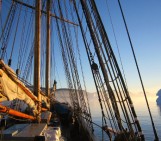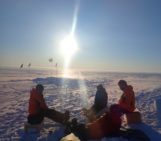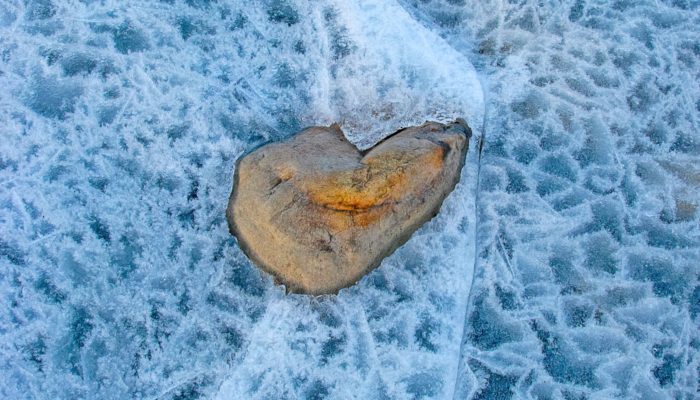
Those of us fortunate to participate in cryo-fieldwork are well aware of the unique, hilarious, and sometimes bizarre scenarios that we often find ourselves in. For this year’s April Fool’s Day, the EGU Cryosphere Blog team shares crazy anecdotes, with a catch: one of these stories is fake! Are you able to tell fact from fiction? Fill in the (twitter) poll, and time will tell if you are right…!!
Weird toilets
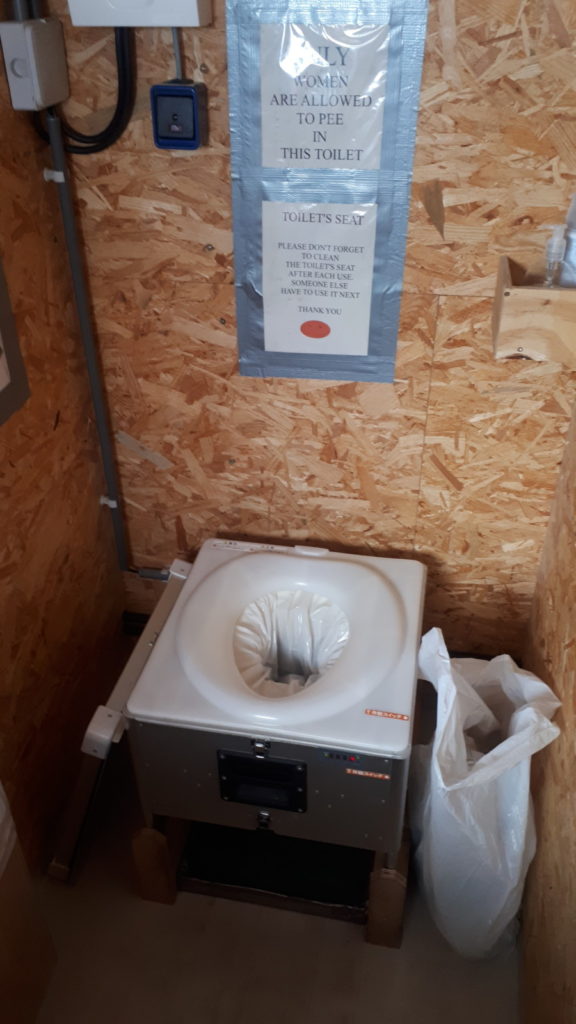
Photo credit: Maaike Izeboud
So I went to Antarctica this past winter season and in the field, we were lucky to have the “fancy” toilets. When I say fancy, I mean what is called “Japanese toilets”. Basically, you do your business in a plastic bag which is attached below the toilet seat (nice and cosy in a moderately heated container, no crouching over a pail toilet in a tent…). Once you’re done, you press a button and then the toilet system seals the bag at the top. You just have to wait 2 minutes and then you can pick up your little “package” and throw it in the bin, kept outside so that everything freezes! There are only two setbacks in all this: (1) following the steps to replace the plastic bag roll in the manual can be a little tricky as it is basically a Japanese manga, in Japanese… And (2) passing your colleagues first thing in the morning with your little plastic bag hidden behind you as you walk to the bin…
Peas with the wind

Photo credit: T.J. Young
In December 2021, I had the claim to be this year’s first scientist to arrive at the Western Antarctic Ice Sheet Divide (“WAIS Divide” for short) field camp–before the camp was fully set up. This meant that the combined kitchen and dining tent was not yet constructed, and were in separate modules for the time being. For every meal, we had to walk outside with our food from the kitchen to the dining module, and conversely, carry dirty dishes the other way, exposed to the conditions. So, here I am, outside in the flat white, feeling ridiculous with my plate of (formerly) hot food, trying my best to not trip over myself and send food flying across the ice sheet. Unfortunately, WAIS Divide is also notorious for its snowy and gusty weather. Several blizzards descended upon our camp and took with it some smaller food from my exposed plate, such as peas, carrots, and corn. We tried to salvage them (food is precious!) but between the storms and trying our best to not trip over the huge snow drifts that it created between the modules, we were not able to save them all…
Christmas cake

Photo credit: https://commons.wikimedia.org/wiki/File:Christmas_cake,_Boxing_Day_2008.jpg
In 2007, I was working at the British Antarctic Survey’s Rothera research station. Our nearest neighbours were the Argentinian team at Base San Martin about 80 km away. San Martin is only visited once a year to change crew, so, very isolated. We used to talk to them on the radio, and (with permission from our management) arranged for them to receive letters from their families, which were delivered to Rothera. We forwarded the letters by air-dropping them out of a low-flying Twin Otter, along with a selection of Rothera-branded merchandise. This was a great success. A few weeks later, they called us on the radio again. Their engineer needed some replacement transistors for one of their instruments – could we supply some? They were very cheap, small items, so we agreed. Then he asked if we had any cigarettes – he’d run out and was getting a bit desperate. I arranged for him to buy some off a colleague who had given up smoking. However, when I asked the pilots about the air drop he said – “you need something to add weight to the package – it’s too light and there’s a risk it’ll blow around in the wind”. It was the week before Christmas. The chef had made a large Christmas cake (a rich, dense fruit cake, with icing) and I asked if I could give a chunk to San Martin. Yes, no problem. So we made up the parcel, with fruit cake as ballast. Then the weather deteriorated. The first clear flying day was… Christmas Day. We called San Martin on the radio. They didn’t respond. The plane went anyway. There was no-one about – they were inside. Our pilot made a couple of low passes over the station until people came running outside, and we successfully dropped the package. Later they emailed us a picture – the caption said “Father Christmas came for us in a red plane!”
Will it melt or not?
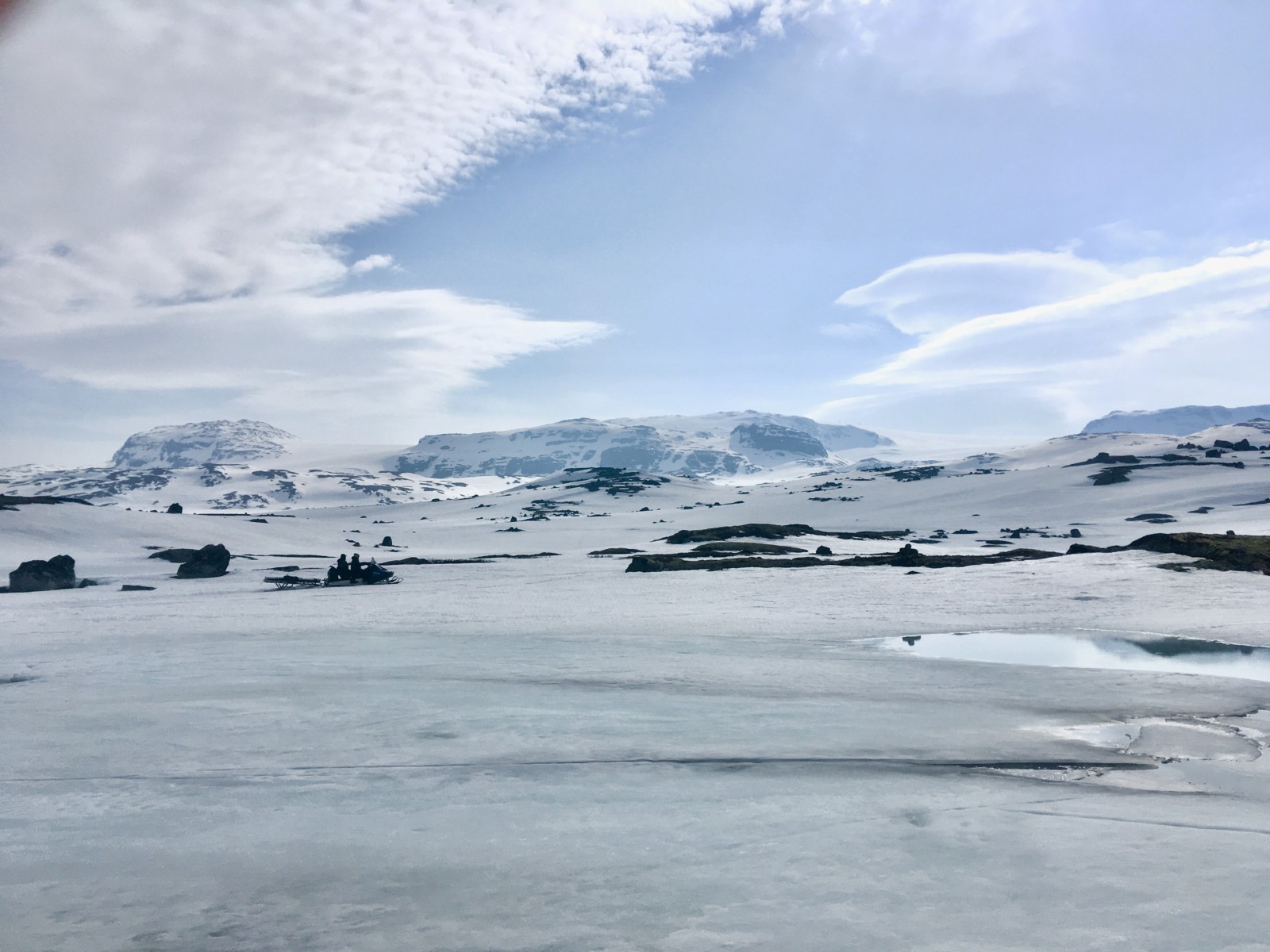
Photo Credit: Emma Pearce
On a field deployment to Norway’s Hardangerjøkulen Ice Cap in 2018, we were greeted by unseasonably warm weather. The only way to get to the top of the ice cap where our research was taking place was to cross a frozen lake on a snowmobile. In a normal season, this wasn’t an issue as the lake would be happily frozen for at least another month. But that year, surface puddles of water were emerging more and more every day. Each morning we would head out and assess the conditions of the lake, and decide if it was still frozen enough to cross. It was always sufficiently frozen, but our crossings were getting quicker and quicker as we really didn’t trust the ice anymore. On the final day, we had to return all the heavy geophysical equipment we had deployed on top of the ice cap back to camp, via the dubious looking lake! The conditions looked ok, so we took a running start and headed across with the heavy equipment, and lo and behold … we made it! The ice held up! However, what we hadn’t thought about was how soft and melted the surrounding snow had become, and our glee of making the lake crossing was quickly diminished. As we drove away from the lake, we felt our snowmobile start sinking into the soft snow, quickly getting stuck and buried. A few hours of digging later and we managed to get it out! But our lessons were learnt: ALWAYS carry a shovel on your snowmobile and the lake isn’t the thing you should worry about!
An evening out of the ordinary
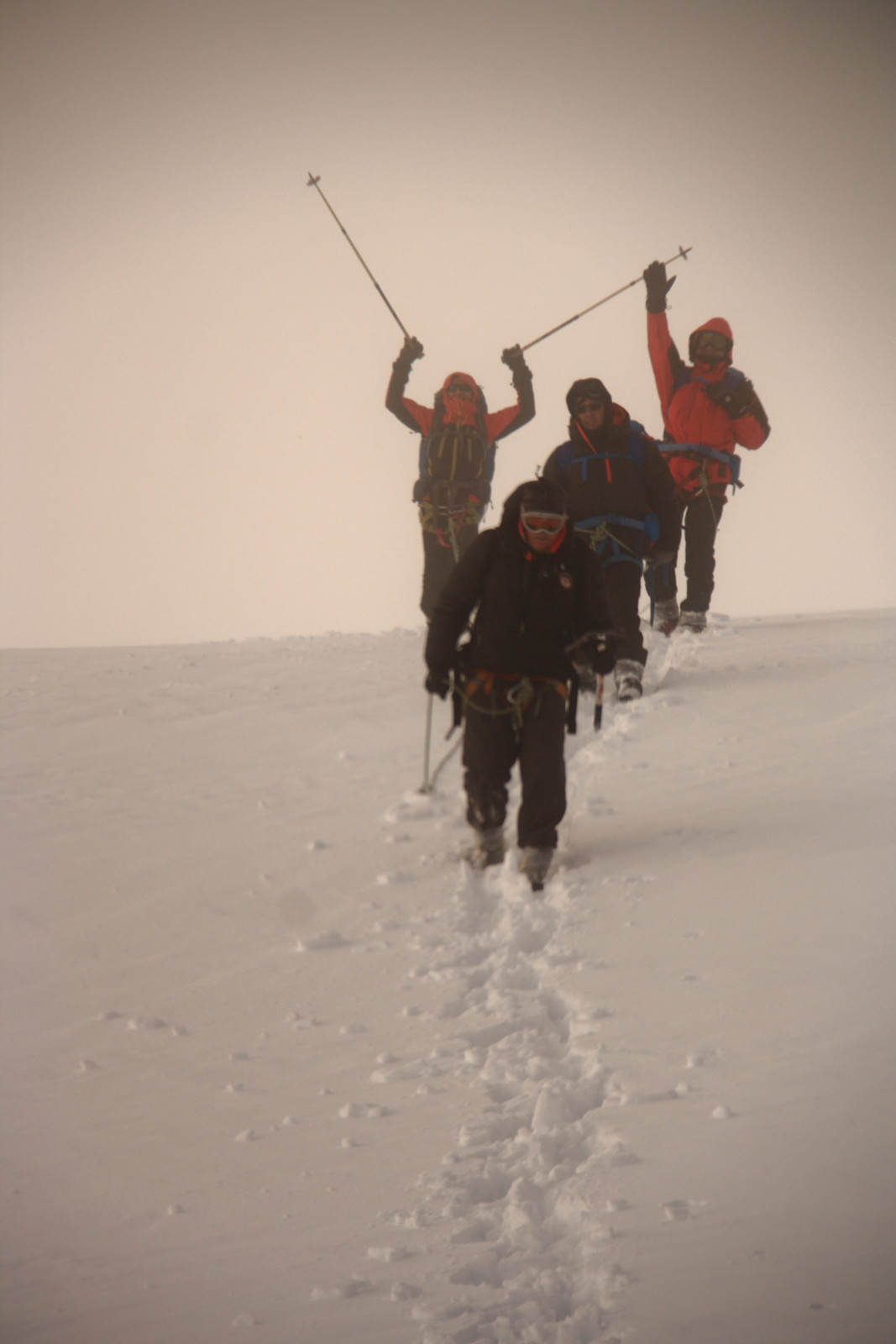
Photo credit: Giovanni Baccolo
At the beginning of my PhD, I had the opportunity to join an expedition to one of the highest glaciers of the Alps. Our goal was to drill an ice core at the Colle del Lys, a glacial saddle in the Monte Rosa massif, at more than 4000 m above sea level. To avoid summer heat, we decided to goto the site in early October. The period was chosen not only to have lower temperatures, so that we could work also during the day (you always need negative temperatures while working with ice), but also because in the Alps, early autumn is relatively stable weather-wise. Of course, we were unlucky and we got constant,..bad weather ! We stayed on the glacier an entire week and never saw the sky until the end of the fieldwork, only clouds, snow and storms (but I was still super happy to be there!).
The day we finished drilling, we contacted the helicopter to organise our descent. The forecast for the next day was good, and so we agreed that we would dismantle the tents and the whole camp, and the helicopter would have come to pick us up that day. When we woke up, the weather was indeed wonderful, a hot sun finally flooding the glaciers with light. We started packing everything up and taking down the tents. It took a few hours and in the early afternoon we called the helicopter’s pilot. He asked us, if possible, to wait a couple of hours, because he was busy. Since the weather was so good we told him there was no problem. That way we could enjoy those beautiful glaciers for a while longer.
I perfectly remember the moment: I was sitting on the top of one of the ice core boxes while looking at the sky “See that little cloud rising from the valley?”. In a few minutes we were bathed in a thick fog. We immediately called the pilot, worried that the fog would prevent him from picking us up. He confirmed that visibility was getting worse, and it would not be possible to fly safely. Spending a night in the open at more than 4000 metres on a glacier is not advisable. We had a choice: mount the camp again or walk down the glacier to a hut about a thousand metres below. All together, we decided for the latter as no one felt like reopening the boxes and assembling everything.
So, we started to descend in the fog along a steep glacier. It took us a long time, because all the snow that had fallen in the previous days had covered the crevasses, forcing us to check the snow strength with the trekking poles every step of the way. You might think we were crazy, but in our defense, two mountain guides were with us and they knew the glacier like the back of their hand. Thanks to them, we finally reached the hut after the sun had set. It was closed, as we were out of season, but the winter room looked so beautiful to me! I remember that as one of the best dinners of my life!
Moral of the story: never trust weather forecasts 100%.
Everyone needs pink crocs
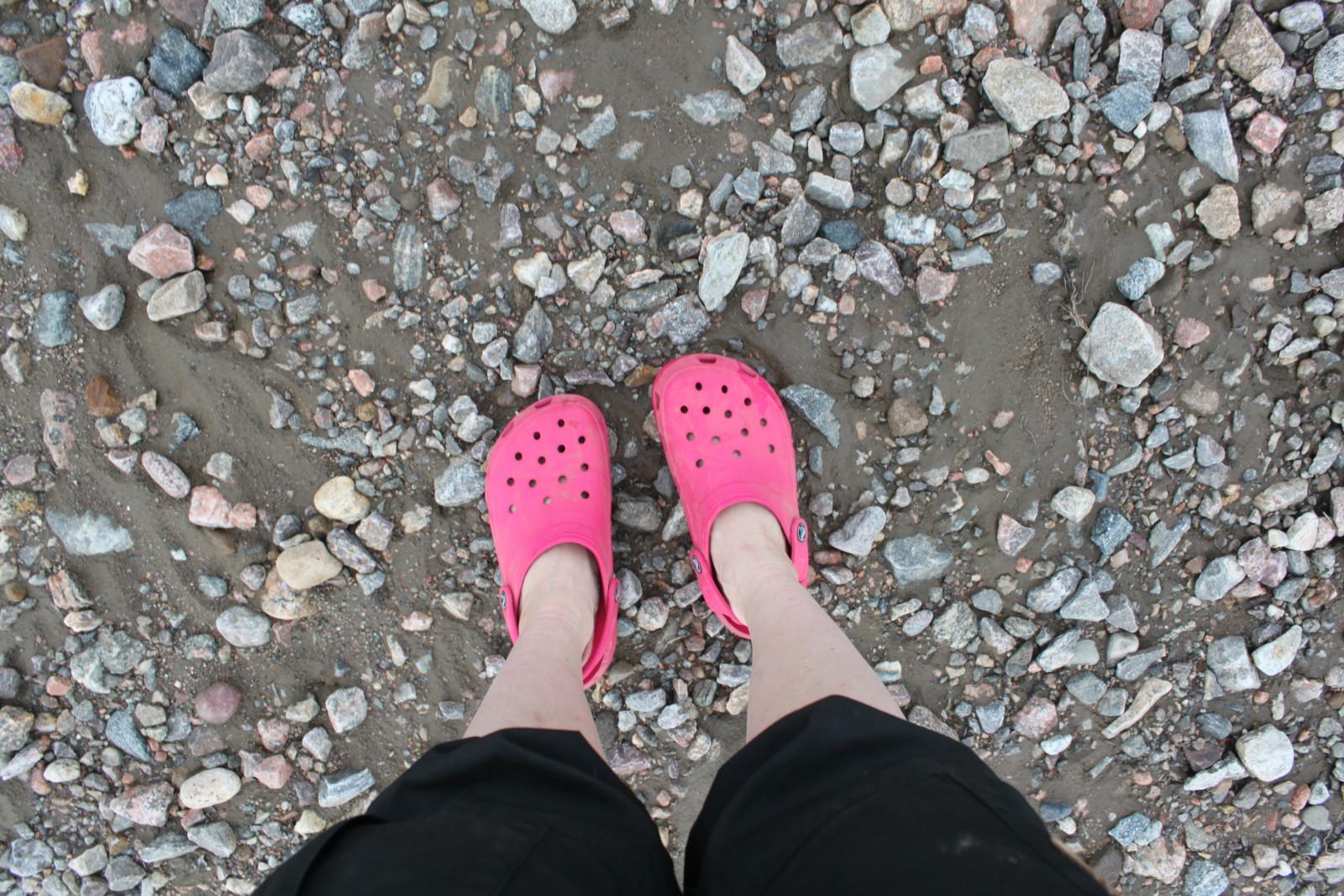
Photo credit: Maria Scheel
I don’t know about you, but I arrived in Zackenberg, Northeast Greenland for my first PhD fieldwork with hiking shoes, rubber boots, but definitely not with crocs. But little would I have known, that this is an unspoken rule – you gotta have your slippers ready! The Zackenberg Ecological Research Station consists of several housing and lab units, and it is admittedly comfy to just slip in and out of shoes when you quickly run for the kitchen to get more needed coffee. This story is about Mel Murphy, who bravely had my back! When I flew in with a chartered twin otter plane, in the few hours before that plane would carry her home again after fieldwork, she quickly observed the situation “Here, you’ll really need them – just give them back to me in Copenhagen!” We never even met before. But she couldn’t have been more right. Not only did I use them hundreds of times in my 5 weeks of sampling, but one day, going for a hike with colleagues that turned into a rather wet stream and fen mud walk, these few-dollar-crocs walked me through icy waters and incredibly slippery riverbed stones better than my 250-dollar-boots, too. My colleagues definitely looked less happy with soaked hiking shoes.
Back in Copenhagen, we met again and I felt like I proudly added great experiences to these beauties, including watching polar bears from our terrace, doing some yoga with views on the majestic Young Sound and using them as perfectly stabilising packing material for fragile samples on the way back home. So, always remember to bring crocs!
We would like to recognize that none of these crazy stories would have come about without the support of national Antarctic programs and the brilliant staff at the stations/fieldwork sites!!
From your EGU Cryoblog team, with love


